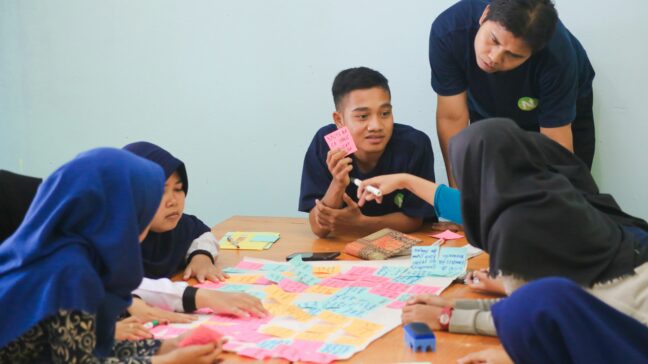Shaping Lifelong Learners: The Symbiosis of Teacher Effectiveness and Positive Impact
In education, a lot of emphasis is placed on teacher effectiveness and positive impact, as it should be. It’s widely accepted that teachers are highly influential on students, and that influence doesn’t just stop at the end of the school day or even the school year. Teachers have the ability to impact students’ learning and achievement for many years.
As a society, we want to know that those responsible for instructing our children are competent, caring, reflective, and ethical. We want teachers to possess the kind of skills, knowledge, and dispositions they need to model positive behaviors and support students in their learning and development.
Principals typically are responsible for monitoring the effectiveness of teachers in their building. They come in a few times per year and formally observe and evaluate each teacher “in action” while they’re teaching a lesson. Principals then rate teachers on their effectiveness using various district-approved criteria.
In addition, colleges and universities that prepare future teachers also play an important role in ensuring their graduates will be effective in the classroom.
That said, teacher effectiveness and having a positive impact on students’ learning and development are related concepts but are not necessarily synonymous. In fact, the Council for the Accreditation of Educator Preparation (CAEP), a leading national accrediting body, requires educator preparation providers to show the extent to which program completers are having a positive impact on the learning and development of their P-12 students. However, despite publishing a guide on the topic, the accrediting body doesn’t clearly articulate that while these terms go hand in glove, they are not the same and can’t be measured in the same way.
In order to have well-rounded, successful learners, we need to see evidence of both teacher effectiveness and positive impact. Here’s a brief explanation of the differences between the two:
Measuring Effectiveness vs. Impact
No doubt about it: We need teachers to plan lessons that are aligned to state standards. They must design learning experiences that will help students grasp important skills and concepts throughout the school year. There continues to be a heavy emphasis on using high stakes standardized assessments to measure student learning and subsequently, teacher effectiveness. However, an assessment is typically not a good way to truly measure positive impact. How, for example, can a test determine a student’s love for learning or their social development?

Long-Term vs. Short-Term Outcomes
We all want to see immediate results. When we change our diet or increase our exercise, we typically expect to see outcomes pretty quickly when we climb on the scale, and we’re elated when we see those pounds going down and feel those clothes become looser. However, we may not realize the long-term impact of those efforts for many months or years later. Lowering our cholesterol, taking pressure off our joints, and the like can take quite a while to notice, and can be hard to measure. This is similar in some ways to teacher effectiveness and positive impact:

Holistic Development vs. Academic Achievement
We certainly need to support our students’ learning. They need to know facts and critical information about a variety of topics. In turn, they must be able to demonstrate what they know and are able to do within both formal and informal assessments. However, students also need to learn how to interact positively with others, solving problems and conflicts in a way that meets their needs while also treating others with respect. In other words, they need to develop life skills.

Student Engagement and Motivation
We need safe, orderly classrooms with sufficient structure, but yet we also need to create learning environments that encourage students to stretch their minds, explore their dreams, and begin the journey of becoming eager lifelong learners.

Striking the Balance: Unveiling the Dual Roles of Effective Teaching
So, a teacher can be effective in a single lesson, or over a unit of study. They can create an orderly, calm learning environment where students are well-behaved. They can create and deliver instructional lessons that are aligned to state standards, and their students can perform well on formative and summative assessments. Those are all examples of teacher effectiveness, and we certainly want that.
However, we also need our teachers to support their students as individuals, helping them to feel excited and motivated. We need teachers to encourage learners to think creatively and critically and ask questions. We want educators to empower students so they gradually take on a greater role in their own learning and decision making. Those are the kinds of influences teachers can and should have on their students, because those are skills that students will carry with them for the rest of their lives. That’s positive impact.
Beyond the Classroom: Nurturing Effective Teachers for Lasting Impact
In summary, while teacher effectiveness is an important aspect of education, having a positive impact on students’ learning and development involves a more comprehensive and long-term perspective. It extends beyond academic achievements to encompass holistic growth and lifelong learning skills. Teacher education program faculty should integrate these concepts into their coursework and clinical experiences. They should also be working in partnership with local school districts by exchanging ideas and providing professional development. Developing highly effective teachers who make a positive impact on students’ learning and development requires a concerted effort, and it doesn’t happen overnight.
###
About the Author: A former public school teacher and college administrator, Dr. Roberta Ross-Fisher provides consultative support to colleges and universities in quality assurance, accreditation, educator preparation and competency-based education. Specialty: Council for the Accreditation of Educator Preparation (CAEP). She can be reached at: Roberta@globaleducationalconsulting.com
Top Photo Credit: Zainul Yasni on Unsplash

